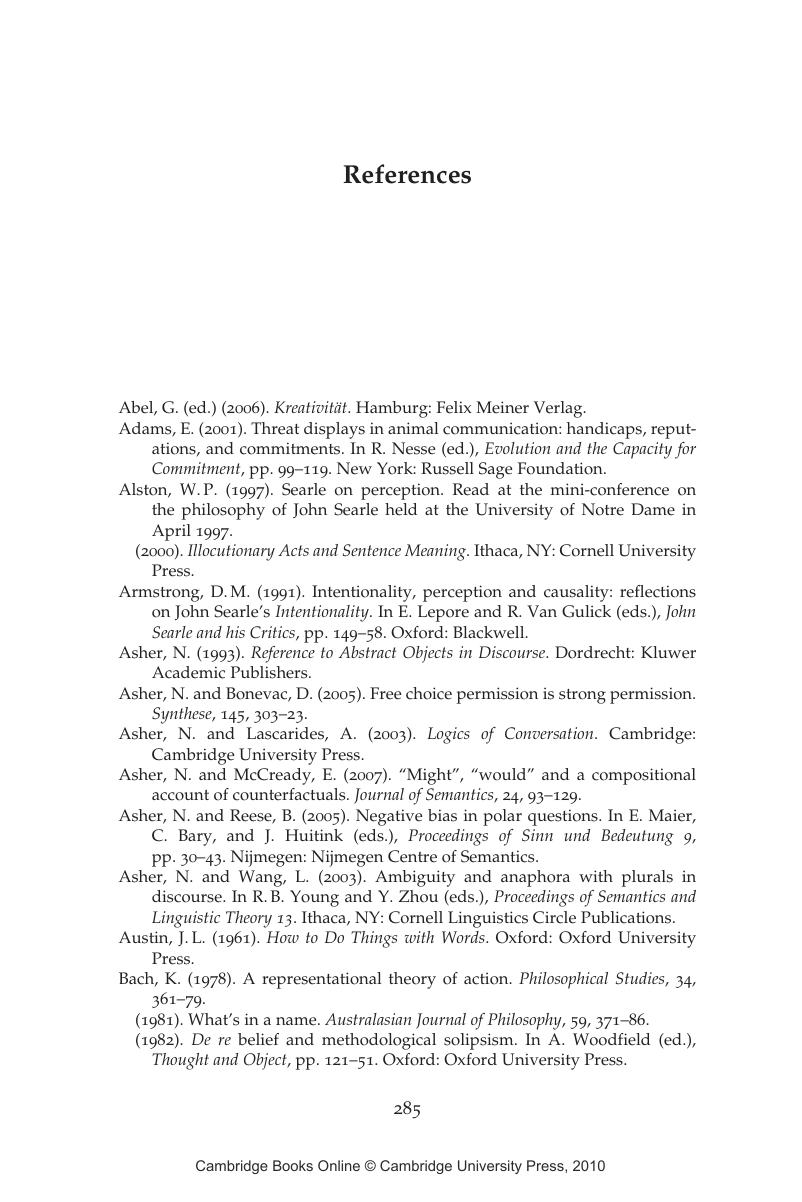References
Published online by Cambridge University Press: 08 January 2010
Summary

- Type
- Chapter
- Information
- John Searle's Philosophy of LanguageForce, Meaning and Mind, pp. 285 - 293Publisher: Cambridge University PressPrint publication year: 2007



